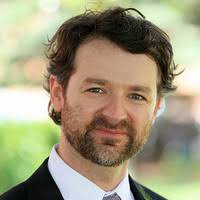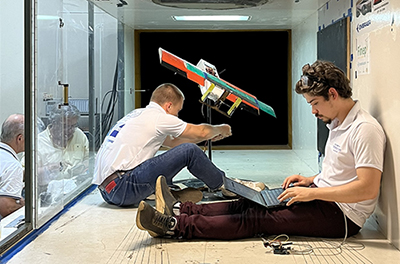Students design autonomous aircraft at bootcamp

A recent international bootcamp provided students with hands-on experience in the field of aeronautics. The event brought industry experts and students together to work on real-world projects, such as designing an unmanned ekranoplan.
"The goal was to provide a 360-degree experience for the students, allowing them maximum freedom in shaping the design, objectives, and activities through a broadly defined project with many open questions.", says associate professor Raffaello Mariani.

KTH and the University of Sao Paolo (EESC-USP) are both committed to developing programs that meet the demands of 21st-century education and the aeronautics industry. Given the strong aerospace ties between Sweden and Brazil, and the close collaboration between Associate Professor Raffaello Mariani at KTH and Professor Glauco Caurin at EESC-USP, partnering up for a boot camp was a natural choice for the two top engineering universities.
"There was also the interest from each university to partner with an institute from 'outside the local mentality' to broaden the scope of course development.", says Raffaello Mariani.
What project did the students work on?


"The students worked on designing an unmanned ekranoplan – a type of aircraft that flies close to the ground and is regaining commercial interest in electric aviation due to its high efficiency. This aircraft presents significant design challenges across all areas, including aerodynamics, stability, and flight control systems, pushing even the most experienced students beyond their comfort zones. For each design aspect the students were assigned 'mini challenges' with the aim to quickly validate their ideas, while also developing complex engineering solutions that went beyond the set learning objectives."

What were the key outcomes?
"The main takeaway for students was learning to combine theory with practice and experiencing industry projects firsthand through lectures and visits to companies like LATAM MRO, XMOBOTS, and Embraer. We believe they also realized the difference between clear-cut academic projects and the more uncertain nature of real-life development."
"For us as organizers, it was a chance to exchange ideas on teaching methods, expectations, and student engagement. We also integrated new approaches into our daily activities. Having the students' full attention, without the distraction of other courses, accelerated their learning and helped them meet the challenges more effectively."
"The bootcamp also highlighted that students from both KTH and USP lacked some key engineering skills needed for professional success, particularly in areas like engineering methodologies, communication, and organization. This reflects a gap in our curricula, which tends to focus on 'content and quantity' at the expense of 'concept acquisition' and the 'technical rationality' required for future engineers."
Are there any plans to organize similar events in the future?
"The first step is an ongoing review of the bootcamp, assessing what worked well and what didn’t, to refine the format for future opportunities. We're also looking at which aspects of the course could be integrated into our respective programs at KTH and USP. In the meantime, we plan to send two KTH students to USP at the end of the year to collaborate with two students there and further develop one of the course challenges that sparked their interest. On a broader level, both schools are keen to continue building this partnership."
